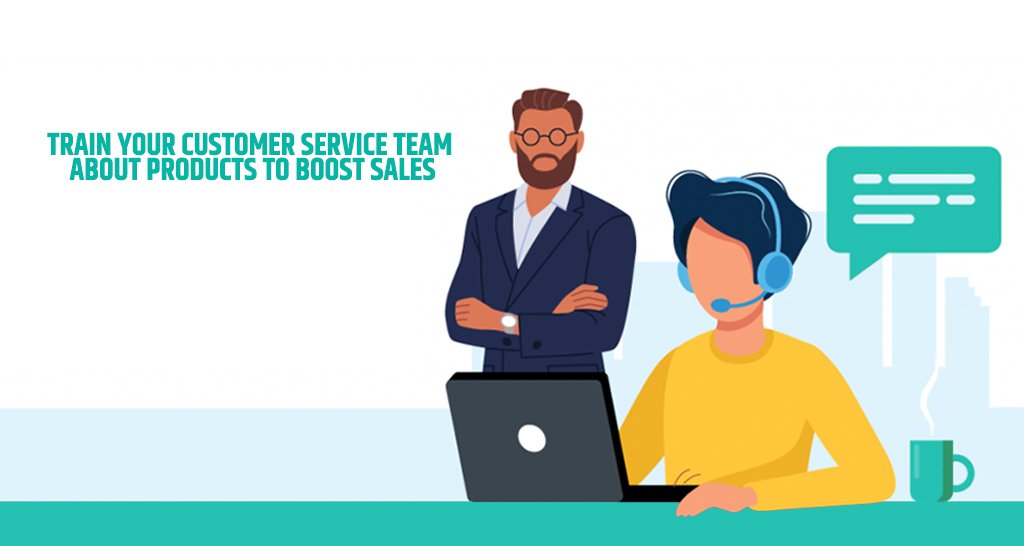Training your customer service team effectively about your products can be a game-changer for both customer satisfaction and sales performance. When your team is well-versed in product details, they can provide better support, handle inquiries more confidently, and ultimately contribute to increased sales. Here’s a comprehensive guide on how to train your customer service team about products and boost sales.
The Importance of Product Knowledge in Customer Service
Why Product Expertise Matters for Customer Support
Product knowledge is critical for customer service representatives because it directly impacts their ability to assist customers effectively. When customer service agents are well-informed about the products they support, they can provide accurate information, troubleshoot issues more efficiently, and handle complex queries with ease. Train your customer service team about products to ensure they possess the knowledge needed to build trust with customers, leading to higher satisfaction and repeat business.
The Link Between Product Knowledge and Sales Performance
A knowledgeable customer service team not only improves customer satisfaction but also plays a significant role in driving sales. Representatives who understand the nuances of your products can better identify cross-sell and upsell opportunities. For example, if a customer is interested in a basic product, a well-trained agent might suggest a premium version or complementary accessory that meets the customer’s needs. This ability to provide relevant recommendations can boost sales and increase the average order value.
Steps to Effectively Train Your Customer Service Team
Assessing the Current Knowledge Level of Your Team
Before developing a training program, it’s essential to assess the existing knowledge level of your customer service team. Conduct surveys or quizzes to identify gaps in their understanding of your products. This initial assessment will help you tailor the training content to address specific areas where improvement is needed.
Creating a Comprehensive Training Program
A comprehensive training program should cover all aspects of your products, including features, benefits, and common issues. Develop detailed training materials, such as manuals, guides, and FAQs, that your team can refer to during their interactions with customers. Incorporate real-life scenarios and case studies to make the training more relevant and engaging.
Implementing Interactive Training Methods
Interactive training methods can enhance learning and retention. Consider using role-playing exercises, where team members simulate customer interactions and practice handling various scenarios. Additionally, interactive webinars and workshops can provide opportunities for real-time Q&A and hands-on learning. Gamification, such as quizzes and competitions, can also make training more engaging and enjoyable.
Tools and Resources for Product Training
Utilizing Digital Platforms and Learning Management Systems
Digital platforms and learning management systems (LMS) can streamline the training process and make it more accessible. LMS platforms allow you to deliver training content online, track progress, and provide feedback. They also enable team members to access training materials anytime, which is especially useful for remote or distributed teams.
Leveraging Product Demonstrations and Role-Playing Exercises
Product demonstrations and role-playing exercises are effective tools for training. Demonstrations provide a visual and practical understanding of how products work, while role-playing exercises allow team members to practice their customer interaction skills. Both methods can help reinforce product knowledge and improve confidence in handling customer queries.
Measuring the Success of Product Training
Monitoring Customer Feedback and Satisfaction
To gauge the effectiveness of your training program, monitor customer feedback and satisfaction levels. Surveys and feedback forms can provide insights into how well your team is performing and whether their product knowledge is meeting customer needs. Look for improvements in customer satisfaction scores and positive comments about the quality of support provided.
Analyzing Sales Data and Conversion Rates Post-Training
Another way to measure success is by analyzing sales data and conversion rates after training. Track key performance indicators (KPIs), such as average order value, conversion rates, and upsell success rates, to determine if there’s been a noticeable improvement. A positive change in these metrics can indicate that the training is translating into better sales performance.
Continuous Improvement and Follow-Up Training
Encouraging Ongoing Learning and Development
Product training should not be a one-time event but an ongoing process. Encourage continuous learning by providing regular updates on new products, features, and industry trends. Offer refresher courses and advanced training opportunities to keep your team’s knowledge current and ensure they stay up-to-date with the latest information.
Adapting Training Programs Based on New Products and Updates
As your product lineup evolves, it’s crucial to adapt your training programs accordingly. Ensure that any new products or updates are integrated into your training materials and sessions. Regularly review and update your training content to reflect changes in your product offerings and maintain its relevance.
Conclusion
Investing in thorough and effective product training for your customer service team can lead to significant benefits for both customer satisfaction and sales. By ensuring your team is well-informed and confident in their product knowledge, you can enhance their ability to support customers, identify sales opportunities, and ultimately drive business growth. The long-term advantages of a well-trained customer service team are well worth the effort and investment.












